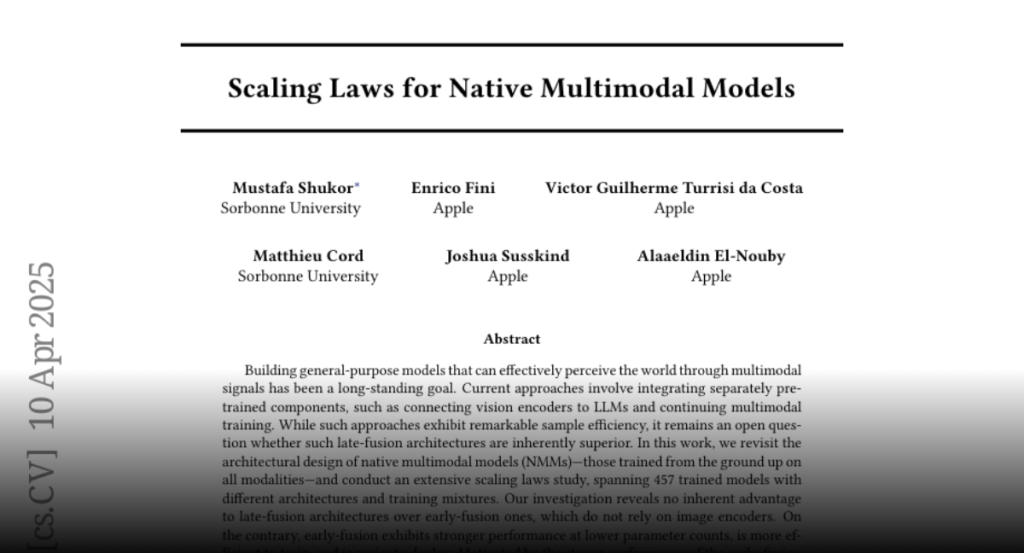Building general-purpose models that can effectively perceive the world
through multimodal signals has been a long-standing goal. Current approaches
involve integrating separately pre-trained components, such as connecting
vision encoders to LLMs and continuing multimodal training. While such
approaches exhibit remarkable sample efficiency, it remains an open question
whether such late-fusion architectures are inherently superior. In this work,
we revisit the architectural design of native multimodal models (NMMs)–those
trained from the ground up on all modalities–and conduct an extensive scaling
laws study, spanning 457 trained models with different architectures and
training mixtures. Our investigation reveals no inherent advantage to
late-fusion architectures over early-fusion ones, which do not rely on image
encoders. On the contrary, early-fusion exhibits stronger performance at lower
parameter counts, is more efficient to train, and is easier to deploy.
Motivated by the strong performance of the early-fusion architectures, we show
that incorporating Mixture of Experts (MoEs) allows for models that learn
modality-specific weights, significantly enhancing performance.

